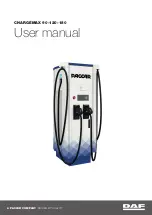
Check Cranking rpm
Engine speed during cranking should be above 100 rpm.
If speed is too low, check for :
Check starter disengagement
With the shift lever in N or P position (A/T) or with the clutch pedal depressed (M/T), turn the ignition switch to
START(III), and release to ON(II).
The starter drive gear should disengage from the flywheel or flywheel ring gear when you release the key.
If the drive gear hangs up on flywheel ring gear, check for :
• dead or low battery.
• open circuit in starter armature commutator segments.
• starter armature dragging.
• shorted armature winding.
• excessive drag in engine.
• loose battery or starter terminals.
• excessively worn starter brushes.
• open circuit in commutator segments.
• dirty or damaged helical splines or drive gear.
• defective drive gear overrunning clutch.
• solenoid plunger and switch malfunction.
• dirty drive gear assembly or damaged overrunning clutch.
STARTER SOLENOID TEST
1. Check the hold-in coil for continuity between the S terminal and the armature housing (ground). The coil is OK
if there is continuity.
2. Check the pull-in coil for continuity between the S and M terminals. The coil is OK if there is continuity.
FREE RUNNING TEST
1. Place the starter motor in a vise equipped with soft jaws and connecta fully-charged 12-volt battery to starter
motor as follows :
2. Connect a test ammeter (100-ampere scale) and carbon pile rheostatas shown in the illustration.
3. Connect a voltmeter (15-volt scale) across the starter motor.
4. Rotate carbon pile to the off position.
5. Connect the battery cable from battery's negative post to the startermotor body.
6. Adjust the carbon pile until battery voltage shown on the voltmeter reads 11 volts.
7. Confirm that the maximum amperage is within the specifications and that the starter motor turns smoothly and
freely :
: Max. 90 Amps
: Min. 2,800 rpm
Page 2 of 3
24.04.2008
http://www.hmaservice.com/viewer/content.asp?IsPrint=true&imgnum=1&print_title...
















































